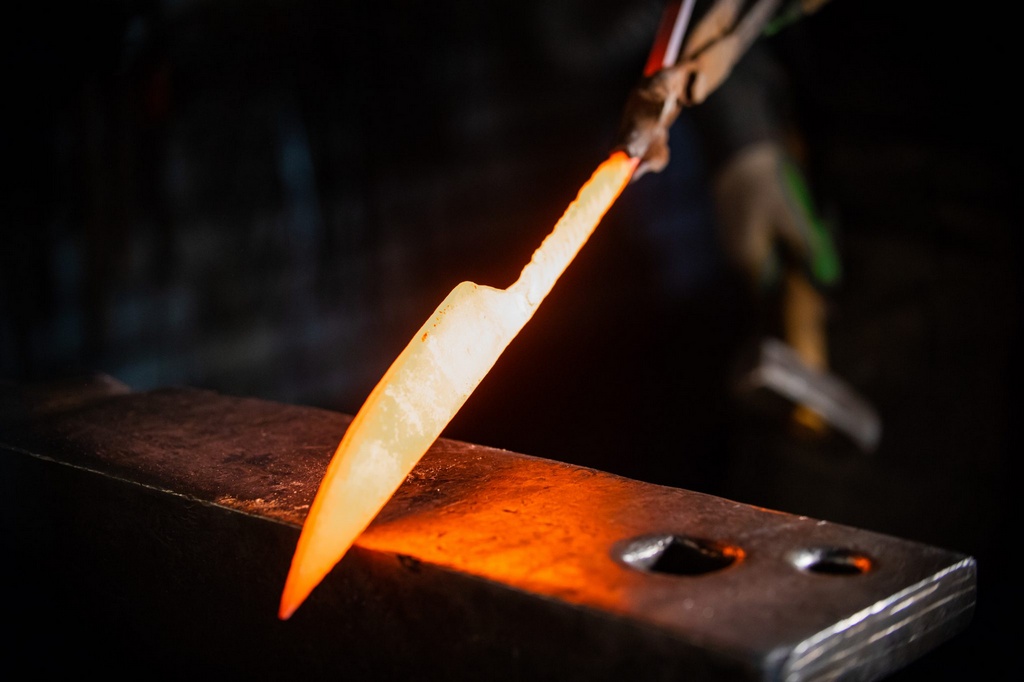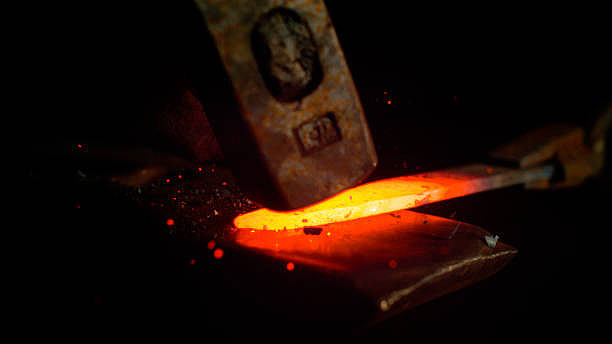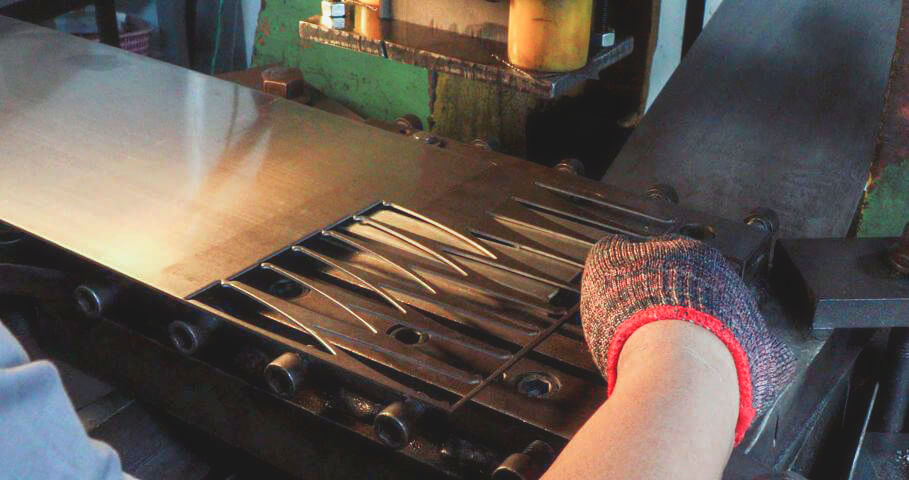And does it matter?

A steel knife is a steel knife, right? Well, not exactly. We have two main methods to produce knives today - Hot drop knife making and stamping. Each have their own characteristics and advantages. Here are the key differences between the two:
Manufacturing Process:
Hot Drop Knife Making: hot drop knife making involves heating the steel or metal to a high temperature and shaping it through forging techniques. The knife maker manually shapes the heated metal allowing for greater customization and control over the design and features of the knife. Stamping Kitchen Knife Production: Stamping involves cutting the knife shape from a large sheet of metal using a machine or hydraulic press. The metal sheet is often thinner compared to forged knives, and the blades are typically stamped out in bulk. This method is more suitable for mass production and repetitive designs.Material Properties:
Hot Drop Knife Making: The hot drop method allows the knife maker to manipulate the metal's properties through heat treatment and forging techniques. This can result in a stronger, more durable blade with better edge retention.

Stamping Kitchen Knife Production:Stamped knives are typically made from softer, thinner metal sheets. They may not possess the same level of durability and edge retention as knives made through hot drop forging. However, advancements in steel quality and heat treatment processes have improved the performance of stamped knives in recent years.

Customization and Design:
Hot Drop Knife Making: Hot drop forging allows for greater customization and creativity. The knife maker can shape the blade, create unique profiles and incorporate intricate details. This method is often favored by custom knife makers and legacy brands who are committed to craftsmanship and the individuality of each knife.
Stamping Kitchen Knife Production: Stamped knives are typically produced in large quantities following standardized designs. While there may be variations in handle materials or minor design elements, the overall design is more uniform and consistent making it ideal for knife makers that have a global presence.
Cost and Accessibility:
Hot Drop Knife Making: Due to the labor-intensive nature of hot drop forging and the craftsmanship involved, custom or handmade knives created through this method tend to be more expensive. They do of course require blacksmith skills, the tools and the time to create.
Stamping Kitchen Knife Production: Stamped knives are generally more affordable and styled for the wider retail market. The mass production nature of stamping allows for the option to scale-up resulting in lower production costs and more affordable price points.
Both hot drop knife making and stamping kitchen knife production have their merits and serve different purposes. Hot drop knife making excels in producing high-quality, custom knives with unique designs, while stamping kitchen knife production offers affordability and consistency in mass-produced knives.
So there you have it. Of course hand-made knives will cost you more, but made well and from a company that is committed to R&D, both can be equally proficient in the kitchen and last for many years.
